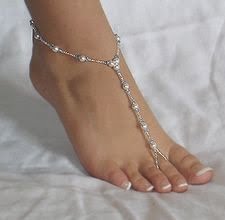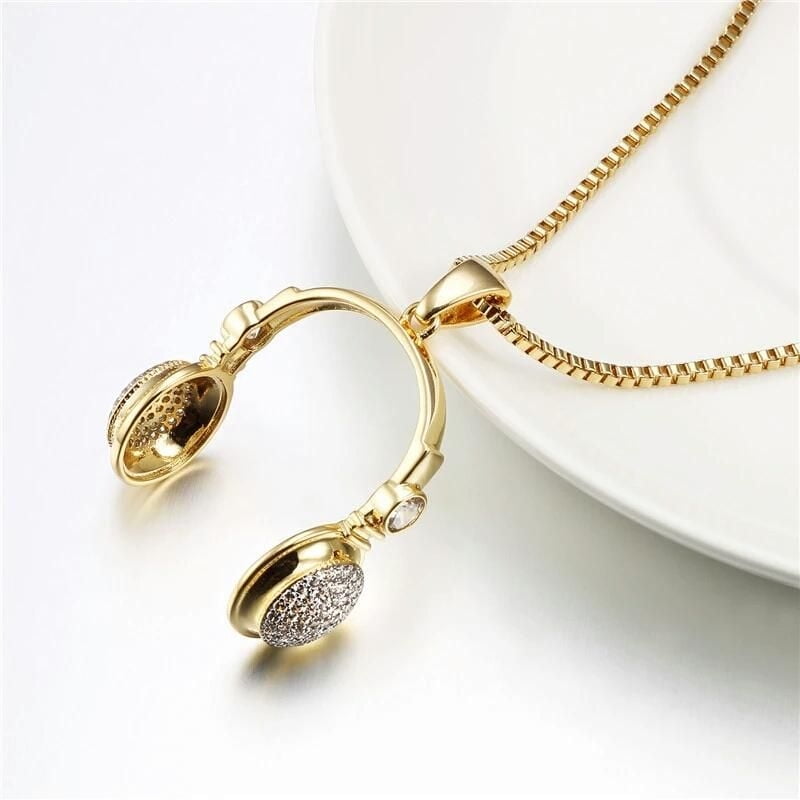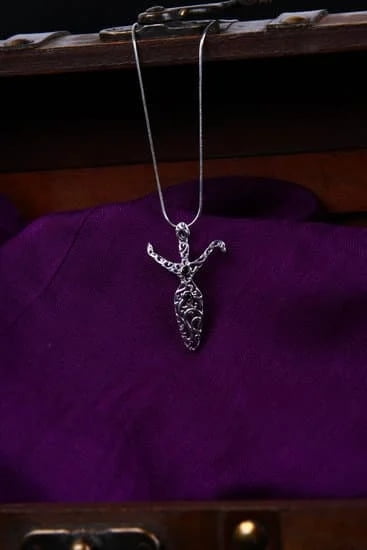Jewelry metal classes refer to the type of metal used in making jewelry. Most commonly, two metals are used for jewelry; these are precious and non-precious metals. Precious metals are rare elements that have been valued since ancient times such as gold, platinum, and silver.
As opposed to precious metals, non-precious metals are common and tend to be less expensive than their rare counterparts (e.g., brass, copper). Jewelry is typically made from one or a combination of these metals that result in a finished product with distinctive characteristics depending on the material used.
In order to create pieces of desirable quality and endurance many jewelers must gain knowledge and understanding about the myriad of metal compositions found in karat gold alloys, silver alloys, brass alloys etc.
Through education, best practices can be established regarding the handling and storage of base metals as well as working processes that result in individual pieces of jewelry lasting through generations.There is no shortage of information available for further exploration into different casting models while more experienced jewelers are likely aware of processes needed when setting diamonds or stones.
It is highly recommended that any serious aspiring jeweler acquire experience related to metal types and quality associated with them. This would include basic instruction courses on different types, history about composition of existing designs along with traditional techniques for working with a specific metal alloy or multiple ones in combination with one another if seeking to create something original.
Mastery over these principles will lead to producing economically viable jewelry designs; educating oneself through trial and error will ultimately result in refining skills necessary for success today’s world where makers look for accuracy at every step of production.
Types of Precious and Non-Precious Metals and Their Properties
Precious metals are often used in jewelry making due to their rare qualities and beauty. These metals are usually gold, silver, platinum, and palladium. Precious metals have a higher intrinsic value because they can be fashioned into stunning pieces of jewelry with intricate designs and shapes.
Gold is perhaps the most sought-after metal for making jewelry due to its softness and malleability. It is also a strong metal which makes it less prone to scratches or damage than other less-precious materials. Gold has a high luster that gives it its signature shine, making it the go-to choice for any piece of jewelry that requires a sophisticated look.
Silver is another popular precious metal used in jewelry making. Its white color provides an ideal backdrop for colorful gems or stones, allowing them to really pop against the silvery sheen of the metal.
Silver is typically mixed with other elements such as copper or nickel when used in jewelry, although pure silver can also be used if desired. Like gold, silver also remains relatively unscathed from everyday wear and tear and will remain looking great for years to come with proper care.
Non-precious metals are also used in crafting jewelry as they are usually cheaper than precious metals yet share many properties in terms of malleability and durability. The most popular non-precious metals used for making jewelry include brass, copper, titanium, tungsten and stainless steel.
Of these materials, brass is especially suited for creating eye-catching pieces as it can produce vibrant colors which add vivid character to any outfit. In addition to being strong and affordable compared to other materials such as gold or silver, brass does not corrode easily nor does it get scratched easily either – perfect for all kinds of bracelets and necklaces.
Favourite Jewelry Metal Classes
- Precious Metals: Gold, Silver, Platinum & Palladium
- Non-Precious Metals: Brass, Copper, Titanium, Tungsten & Stainless Steel
Metals Used in Jewelry Design and Their Properties
1. Gold Gold is a classic choice for jewelry that has been valued for thousands of years. It is soft and malleable, making it very easy to shape into almost any desired form. In addition, gold does not corrode or tarnish, meaning that it will last for a long time without wearing or discoloring. Gold comes in different colors such as yellow, rose, and white depending on the amount of alloying metals present.
2. Silver Silver is another popular metal choice used in jewelry making because of its ability to take on intricate shapes and designs due to its flexibility and malleability. Silver has an extremely bright shine that catches the light in interesting ways when set with gemstones, making pieces more visually appealing. It also naturally develops a patina over time which can give pieces an heirloom feel without any additional care needed.
3. Platinum Platinum is one of the most valuable metals used in jewelry making due to its extreme durability and superior strength. This makes platinum ideal for setting heavy gemstones such as diamonds since it won’t bend or allowance easily over time like some other metals can do with continuous wear. Platinum also does not tarnish and is hypoallergenic which makes it safer for those with sensitive skin.
4. Palladium Palladium is a newer metal that has begun gaining popularity among jewelers due to its durability, attractive shine, weightless feeling on the finger, and affordability compared to precious metals like gold or platinum. It has similar properties to platinum which makes it useful for setting heavier or larger stones while being hypoallergenic at the same time. The lustrous white color of palladium also compliments many gemstones nicely due to its high reflective surface quality known as “adamant brilliance”.
Gold Jewelry Metal Classes and Alloys
Gold is often considered the ideal metal for jewelry making due to its malleability, luster and status as a precious metal. But there are different classes and alloys of gold used in jewelry that vary from each other in purity, color, and strength. Here are some common gold jewelry metals and alloys:
- 24K/999 Gold (Pure Gold): Pure 24-karat gold is the softest form of gold used for jewelry and contains 99.9% pure gold. It can be too soft for rings or bracelets since it’s easily scratched and dented.
- 22K Gold (916): 22-karat gold usually contains 91.6% pure gold compared to 99.9% in 24K gold jewelry. It has a bright yellow hue but is not as durable as 18K or 14K gold jewellery.
- 18K Gold (750): 18-karat gold is made up of 75% pure gold while the remaining 25% is made up of various alloys such as copper, silver, zinc, etc. It’s more durable than higher karat pieces yet still has a bright yellow hue.
- 14K Gold (585): 14-karat items are composed of 58.5% pure gold along with 41.5% other metals like copper, silver, etc. It’s harder than higher karat items which makes it ideal for daily use item such as wedding bands.
Silver Jewelry Metal Classes and Alloys
The 80’s were a time when silver jewelry was becoming increasingly popular due to its affordability, malleability and popularity among youth. As such, the use of silver alloy classes expanded to include:
- Sterling Silver – 92.5% pure silver and 7.5% copper.
- Neo-Classical Silver – 70% pure silver plus 30% copper, zinc and other alloys.
- Britannia Silver – 95.84 % and 4.16% copper.
McNally Russell made popular their vintage sterling silver jewelry collection during the mid and late twentieth century which included vintage rings, necklaces, bracelets and earrings in many different styles. The company’s hallmark “M R” stamped their high quality sterling pieces with 925 to identify them as real sterling products. This helped ensure customers would not suspect any part of the collections being fake or composed of second-rate metals like brass or gold plating re-purposed as sterling jewelry.
When talking about genuine Sterling Silver Alloy class it’s important to note that an identifying mark is usually visible on occasions in which more than one type of metal is used; Including 18k gold, platinum and semi-precious stones alongside other lesser metals – “M R” signifying the sterling composition may be seen alongside “18K”.
CuSn8 – also referred to as German Silver as it originated from Germany – was introduced in the Americas by McNally Russell in the early 70s for its scratch resistance qualities that earlier varieties could not match at the time without weakening the structural integrity of jewelry pieces overall. It can easily be identified by its unique yellowish or grey hue often mistaken for ivory due to its matte surface finish; making it extremely popular amongst jewelers still today.
Platinum Jewelry Metal Classes and Alloys
Platinum is one of the most well-known jewelry metals. It is a precious, scarce metal that is known for its beauty and lasting durability. Platinum is hypoallergenic, making it a perfect choice for those with sensitive skin.
Additionally, it is incredibly dense and strong, making it hard to scratch and requiring less maintenance compared to other metals. Platinum has been given royal honors since ancient times and has since become recognized as an honorable symbol of long-lasting luxury items. Its rarity is what makes it highly desirable amongst jewelry makers and buyers alike.
Platinum jewelry metal classes can be divided into three distinct alloys: 95%, 90%, and 85%. 95% pure platinum alloys are made up of 95% pure platinum along with 5% additional metals so as to produce a stronger material that will endure a long life without losing its original shine or shape.
The 90% alloys include 6 parts platinum to 4 parts other elements like ruthenium, palladium, cobalt, or iridium while the 85% includes 15 parts other metallic elements such as copper, gold, silver or zinc. Each alloy offers unique characteristics that must be considered depending on the intended use of the jewelry item.
The cost difference between each metal class depends on both market value fluctuations but also other factors such as appraisal costs of the specific item itself due to its metal content & weight or any gemstones added onto them to complete their overall look & feel (grind/polish/setting process costs). In addition to these alloys of pure platinum jewelry items crafted from reclaimed bullion coins (i.e.
; Krugerrand) typically cost more due to its historical value but they also represent an environmentally friendly way to reduce waste in our industry while still showing off exceptional high-end pieces.
Cobalt Jewelry Metal Classes and Alloys
Cobalt is the most important metal in jewelry metal classes. It is a strong and light-weight alloy that contains at least 50% cobalt, but usually more than that. Cobalt has been used to make jewelry for centuries and is often referred to as “white gold”. It can be combined with other metals such as copper, steel, and nickel to create different alloys depending on the desired look and durability of the product.
Similarity to White Gold
Of all jewelry metal classes, cobalt is one of the most similar to white gold in terms of appearance and color. Cobalt also provides the scratch-resistance of traditional gold, but it does not tarnish like other metals so its properties are quite desirable for many jewelry makers. The strength of this type of alloy means it can hold intricate designs well while still being relatively lightweight.
Durability
Cobalt’s high melting point of 1065°C makes it one of the strongest metals for everyday use when it comes to jewelry metal classes; this means that it will not corrode over time while exposed to air or water, making it a great choice for everyday wear jewellery such as wedding bands and necklaces.
Furthermore, the hardness and density resistance properties give cobalt an added advantage compared to other materials: it won’t get scratched or tarnished easily unlike softer materials like gold and brass which need more upkeep with regular polishing.
Additionally, cobalt has excellent magnetic characteristics which enable manufacturers to make intricate pieces by using magnetic clasps or decorative magnets which are nice subtle accents when worn.
Affordability
One main benefit when considering cobalt alloy for your jewelry metal class purchase is its affordability compared to traditional precious metals like gold, silver or platinum.
Many customers report greater satisfaction with their purchase because they found an item they really loved at a much lower price point than what they were used to with precious metals – especially those looking for classic styles such as intricate engagement rings or luxurious watches that can cost thousands when bought in pure gold form.
Plus since cobalt is lighter in weight you have less worry about additional costs associated with heavier items like hefty delivery charges or customizations because even though this type of alloy offers more strength than ordinary metals, its lighter counterpart allows designers full freedom to create without worrying about adding weight (and extra costs).
Base Metal Jewelry Classes and Their Properties
Base metal jewelry is an incredibly popular type of jewelry for a variety of reasons. Not only is it usually much cheaper than precious metal jewelry, but it also comes in many different classes, each possessing their own unique properties.
- Nickel: Nickel is one of the most popular and affordable base metals used to make jewelry. It is anti-allergenic and non-magnetic; however, it can easily scratch or tarnish.
- Aluminium: Aluminium is lightweight and resistant to rusting and tarnishing making it perfect for everyday wear. This metal does not react with skin oils, so it is less likely to cause any allergic reactions in your skin.
- Titanium: Titanium has become a very popular choice for jewelry as it offers superior strength, durability, and corrosion resistance when compared to other metals in its class. Also, titanium doesn’t cause allergic reactions like some other metals.
- Stainless Steel: Stainless steel has become increasingly more available on the market due to its low cost and excellent rust/corrosion resistance. It does not require any special maintenance and stands up well against scratches or wear.
Though all base metal jewels have their own unique properties there are still ways to keep them looking beautiful for years to come. Be sure to store the pieces away from direct sunlight or moisture as these elements may cause discoloration or accelerated tarnishing over time.
Furthermore, regular cleaning with a soft bristle brush dipped in a mild soap solution can help keep your pieces free of dirt buildup. Additionally using a polishing cloth specially formulated for the type of metal will allow you to bring back some of that original shine you fell in love with when you purchased it.
Pros and Cons of Different Metal Classes
Gold – Gold is the most popular and traditional choice of metal for jewelry. It is considered a luxurious option and can increase the overall value of your piece. Gold shines brilliantly, it does not tarnish, and it also has a long-lasting luster that never fades. On the downside, gold is expensive and not as strong as other metals used for jewelry.
Silver – Silver is a white-colored metal often used in combination with gold in necklaces, earrings, and other jewelry pieces. Silver is much more affordable than gold when it comes to cost.
Its shine rarely tarnishes and its a great choice for those looking for a classic look without the hefty price tag that comes with buying gold jewelry. One downside to silver jewelry is that it’s not as durable as items made from gold or other stronger metals such as titanium or platinum.
Titanium – Titanium offers superior strength, making it an ideal choice for those looking for pieces that last longer and endure heavier wear-and-tear than items made with silver or gold would offer. However, titanium does not have the same level of shine as silver or gold, which may be off-putting to those who favor sparkle over durability in their jewelry.
Additionally, titanium tends to be more expensive than other metal types, so you may pay a premium if you decide this is right for you.
Platinum – Platinum is a precious metal known for its unique bluish shade that doesn’t tarnish over time like silver or discolor like gold can do over time if not properly cared for. The exceptional strength of platinum makes it ideal for fashioning fine rings or necklaces that won’t easily break despite frequent wearings.
The only downside to platinum jewelry lies in its price tag; it tends to be significantly more expensive than other common metals used in creating jewelry pieces due to the rarity of the raw material required to manufacture quality products from this precious metal type.
Care and Maintenance Tips for Jewelry Metal Classes
Gold Jewelry
Gold jewelry is often associated with luxury and monetary value. Taking good care of gold jewelry is important for preserving it’s beautiful luster and shine. Gold should be taken off when working out, swimming or playing sports to ensure it does not get scratched or develop signs of wear and tear over time.
Cleaning gold jewelry regularly with mild soap, warm water and a soft cloth will keep dirt at bay and prevent the jewelry from tarnishing. It’s also important to store these pieces individually in a soft pouch or cloth so that they don’t rub against each other and become scratched.
Silver Jewelry
Silver is known for its beautiful shining white hue. To keep silver sparkly clean use a polishing cloth specifically designed for silver jewelry – this will provide deep cleaning power beyond what you can do with a simple washcloth and detergent.
While wearing silver jewelry it’s best to avoid contact with products such as hairspray, lotion, perfume etc as these chemicals may discolor the metal over time. It’s also important to store silver pieces separately utilizing anti-tarnish bags or boxes because it is very vulnerable when exposed to air.
Platinum Jewelry
Platinum is renowned for its purity, durability and strength making it an ideal choice for valuable pieces of jewelry that are meant to last many generations. Daily exposure to sweat, dirt and skin particles cause platinum metal to become dull over time which detracts from its natural beauty.
Naturally occurring oils on our skin are often enough to remove any build up on its surface if occasional wiping down with a microfiber cloth doesn’t do the trick then using special cleaning solutions made specifically for platinum metals are available online or in stores.
Platinum should always be stored separately from other metals due to its delicate nature – placing them in woolen bags avoids them getting scratched while in storage or exposed long periods of air turning them yellow over time.
Popular Jewelry Designs Incorporating Different Metal Classes
Jewelry metal classes provide a clear classification system for the metals used in many pieces of jewelry. Each class of metal is equally important, although certain jewelry items may utilize one or a combination of several classification types.
Gold, silver, and platinum are the three most common of these metal classes, and each carries its own properties and value that make it perfect for certain designs. Here we will further explore some popular jewelry designs that incorporate different metal classes and how they improve the look and feel of those pieces specifically.
One of the most commonly seen gold jewelry designs includes wedding rings. Gold is both an affordable option for couples when it comes to choosing a wedding band material as well as one with strong symbolic representation due to its bright color and malleability properties.
Additionally, gold rings require minimal maintenance and can be considered heirloom pieces that can be passed down generations. It is also not uncommon to see other pieces such as earrings, necklaces, brooches, bracelets, etc., all incorporating this particular metal class when looking at traditional jewelry designs.
Next up is silver which has been used in jewelry manufacturing since antiquity times with amazing results featuring filigree work and beautifully crafted clasps on different types of items. Silver charms have become especially popular over recent years due to their shininess and affordability relative to other materials – perfect for kids’ bracelets or necklaces as personalized gifts.
Another common example involving silver would be small trinkets known as “good luck charms” which often combine beautiful stones set in pure silver mounts which give them an extra classy vibe perfect for giving away as presents or special occasions such as graduations or anniversaries.
Lastly comes platinum which is one of the hardest yet lightweight metals suitable mostly for luxury pieces and formal attire events such as red carpets or weddings where a higher level of sophistication can be achieved using some platinum-based products like diamond studded earrings or engagement rings with white gold nicely integrated into certain parts again giving them elegance combined with strength at the same time without sacrificing too much about their weight compared to other materials like gold primarily used for rings design works because its height properties help produce sharper edges around stones adding that extra flashy look here too so overall speaking it makes wonder through great manufacturing techniques along with delightful final touches.
Finishing Tips for Different Jewelry Metal Classes
Jewelry metal is an important part of any piece of jewelry, as it sets the tone and style of the item. There are various types of jewelry metal classes that each have specific properties and finishes. It is important to understand the different styles and finishes available in order to maximize the aesthetic appeal and durability of your finished piece. This article will outline some tips for finishing each of the major jewelry metal classes.
One major type of jewelry metal class is alloys, which are a combination of two or more metals mixed together in order to create a product with unique characteristics and colors. Bronze, brass, nickel silver, German silver, copper, aluminum, and stainless steel are some common alloys used in jewelry-making. To enhance the look and luster of alloy pieces, electroplating can be used to plate them with different metals such as gold or rose gold for a luxurious finish.
Another group of metals included in many jewelry designs are precious metals such as gold, silver, platinum, and palladium. These metals have naturally occurring features that make them uniquely valuable for aesthetics while still being durable enough for durable pieces. Gold specifically has been highly sought after since ancient times due to its ability to resist tarnishing even when exposed to air or water over long periods.
Silver also provides an attractive finish but must be kept clean by wiping down after use as oxidation can cause tarnish which affects its lustrous appearance if not taken care of regularly. Platinum meanwhile has excellent staying power without becoming dulled over time and weighing much less than gold while still having comparable strength making it increasingly popular choice for fine jewelry today.
The last group often featured in modern designs involves man-made resins such as polymers and acrylics which offer a wide range of vibrant colors while still remaining cost effective solutions when compared to precious metals. As they take on dye easily these materials can be infused with different shades from dazzling neutrals to lively pastels depending on individual preferences creating truly one-of-a-kind jewels like never before seen.
In terms of caring for polymer pieces simply avoid contact with water so no loss in quality occurs while ensuring longevity is maintained; however do note that detergents should not be used here as they could easily damage this material if used incorrectly.

Welcome to my jewelry blog! My name is Sarah and I am the owner of this blog.
I love making jewelry and sharing my creations with others.
So whether you’re someone who loves wearing jewelry yourself or simply enjoys learning about it, be sure to check out my blog for insightful posts on everything related to this exciting topic!





